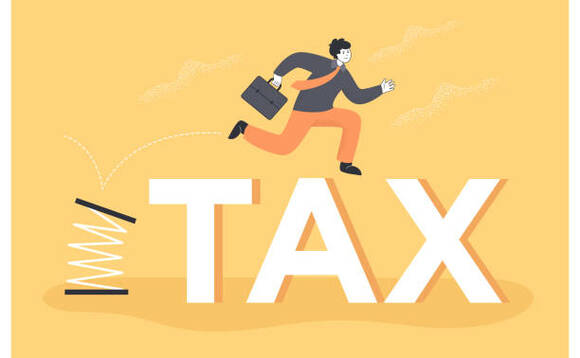The difference between the total amount of tax expected and that which is actually paid hit £32bn in 2020/21 - according to HM Revenue and Customs (HMRC).
At 5.1%, there has been no change in the percentage tax gap compared to the previous year, although the monetary value has fallen by £2bn from £34bn in the 2019/20 tax year, HMRC said.
Failure to take reasonable care, criminal attacks, non-payment and evasion were among the main reasons for the tax gap in 2020/21 in terms of behaviour.
In terms of customers, small businesses were responsible for nearly half of the tax gap, at around £15.6bn, according to HMRC's data.
Criminals accounted for £5.2bn of the gap, while medium-sized businesses made up £3.9bn and large businesses accounted for £3.6bn.
Individuals accounted for £2.5bn of the overall tax gap, with wealthy customers accounting for £1.5bn.
The tax gap for income tax, national insurance contributions and capital gains tax was £12.7bn in 2020/21.
VAT accounted for the second biggest chunk of the total tax gap, at £9.0bn, while corporation tax accounted for £5.6bn of the gap, while excise duties made up £3.5bn.
Around 4% of the tax gap involved "other taxes", covering a range of levies including customs duty, insurance premium tax and inheritance tax.
The total tax due to be paid fell from £672bn in 2019/20 to £635bn in 2020/21, due to the economic impact of Covid-19.
HMRC further said said there was some uncertainty for the tax gap estimates for the first year of the coronavirus pandemic and they could be subject to revisions in future years.
Jonathan Athow, HMRC's director general for customer strategy and tax design, said: "The vast majority of taxpayers and businesses paid the correct amount of tax owed.
"We want to help everyone to get their tax right as the revenue we raise helps fund our vital public services."
HMRC said there has been a long-term reduction in the overall tax gap, from 7.5% in 2005/06, to 5.1% in the 2020/21.
Its publication excluded estimates of error and fraud in the Covid-19 support schemes.
HMRC added that it is impossible to collect every penny of tax that is owed. It cannot collect outstanding tax from businesses that go bust, for example.
It's main findings for the tax year 2020 to 2021 are summarised here:
- the UK tax gap in 2020 to 2021 is estimated to be 5.1% of total theoretical tax liabilities (£32bn), which means HMRC protected 94.9% of all tax due
- the tax gap reduced from 7.5% in the tax year 2005 to 2006 to 5.1% in 2020 to 2021 - remaining low and stable between the years 2017 to 2018 and 2020 to 2021
- the tax gap for Income Tax, National Insurance contributions and Capital Gains Tax (IT, NICs and CGT) is 3.5% in 2020 to 2021 at £12.7bn - this is the biggest share of the total tax gap when viewed by type of tax (39.5%)
- the tax gap for VAT is 7% in 2020 to 2021 and is the second biggest share of the total tax gap at £9bn (28.0%)
- the tax gap for VAT reduced from 14.1% in 2005 to 2006 to 7.0% in 2020 to 2021
- the tax gap for Corporation Tax reduced from 11.5% in 2005 to 2006 to 9.2% in 2020 to 2021, reaching a low of 6.5% in 2011 to 2012 and remaining stable since 2014 to 2015
- the tax gap for Excise Duty reduced from 8.3% in 2005 to 2006 to 7.2% in 2020 to 2021, reaching a low of 5.0% in 2011 to 2012 - the latest years show a stable trend since 2013 to 2014





